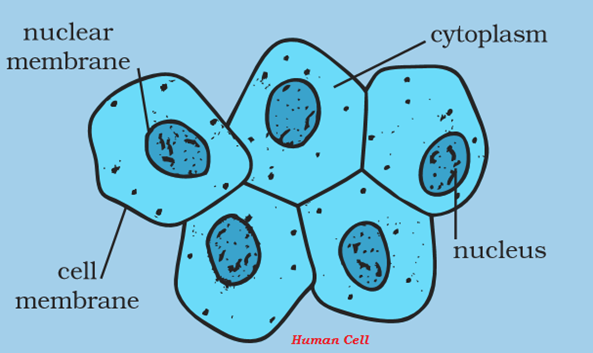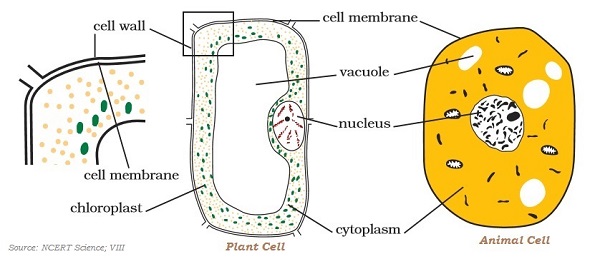
- Biology - Home
- Biology - Structure and Functions
- The Fundamental Unit of Life
- Biology - Tissues
- Biology - Animal Tissue
- Diversity in Living Organisms
- Biology - Plantae Kingdom
- Biology - Animalia Kingdom
- Biology - Vertebrata
- Biology - Transportation in Humans
- Biology - Transportation in Plants
- Biology - Excretion
- Biology - Control and Coordination
- Biology - Hormones in Animal
- How do Organisms Reproduce?
- Biology - Sexual Reproduction
- Biology - Reproduction in Animals
- Reaching the Age of Adolescence
- Biology - Heredity and Evolution
- Biology - Life Processes
- Biology - Respiration
- Microorganisms: Friend and Foe
- Biology - Why do We Fall Ill
- Biology - Natural Resources
- Biology - Our Environment
- Conservation of Plants and Animals
Biology - Structure and Functions
Introduction
The basic structural unit of an organ is known as the cell.
In 1665, Robert Hooke discovered the cell.
A cell is a living organism.
A human body has trillions of cells, which vary in shapes and sizes.
The organism, which is made up of more than one cell, is known as multicellular organism.
The single-celled organisms are known as unicellular organism. E.g. Amoeba.

A single-celled organism performs all the essential functions that a multicellular organism performs.
Unlike other organisms, Amoeba has no definite shape; so, it keeps on changing its shape.
Amoeba has pseudopodia, which means pseudo means false and podia means feet.
Amoeba is a full-fledged organism capable of independent existence.
Shape of the cells are normally round, spherical, or elongated.
Protoplasm is known as the living substance of the cell.
The cells having nuclear substances without nuclear membrane are known as prokaryotic cells. E.g. bacteria and blue green algae.
The cells having well organized nucleus with a nuclear membrane are designated as eukaryotic cells. All multicellular organisms are eukaryotic cells.
Cell Structure and Function
The basic parts of a cell are cell membrane, cytoplasm, and nucleus.

Cell membrane is also known as the plasma membrane.
The plasma membrane is porous and allows certain substances or materials move both inward and outward.
The central dense round structure in the center is known as nucleus.
The jelly-like substance between the nucleus and the cell membrane (as shown in the above image) is known as cytoplasm.
Different organelles of cells are also present in the cytoplasm such as Mitochondria, Golgi bodies, Ribosomes, etc.
Located in central part, nucleus is almost in spherical shape.
Nucleus is separated from the cytoplasm by a porous membrane known as the nuclear membrane.
The smaller and spherical structure, found inside the nucleus, is known as nucleolus.
Nucleus contains thread-like structures known as chromosomes.
Chromosomes carry genes and help in inheriting the characteristics of the parents to the offspring.
Gene is a fundamental unit of inheritance in living organisms.
The entire constituents of a living cell are known as protoplasm, which include nucleus and cytoplasm.
Plant Cell
The cell membrane provides shape to the cells of plants and animals.
In plant cell, cell wall is an additional covering over the cell membrane.

An animal cell does not have cell wall.
Cell wall gives shape and rigidity to plant cells.
Cell wall gives protection, plant cells need protection against varying temperature, high wind speed, atmospheric moisture, etc.
Bacterial cell also has a cell wall.
Usually, most of the cells are microscopic in size and are not visible to the naked eye.
The size of smallest cell is 0.1 to 0.5 micrometer found in bacteria.
The size of largest cell is 170 mm 130 mm, found in the egg of an ostrich.
The size of the cells however has no relation with the size of the body of the animal or plant.
Some small colored bodies in the cytoplasm of the cells of Tradescantia leaf are known as plastids.
Plastids are found in different colors.
Some plastids have green pigment and known as chlorophyll.
Green colored plastids are known as chloroplasts.
Chloroplasts give green color to the leaves.
Chlorophyll is essential for the photosynthesis.